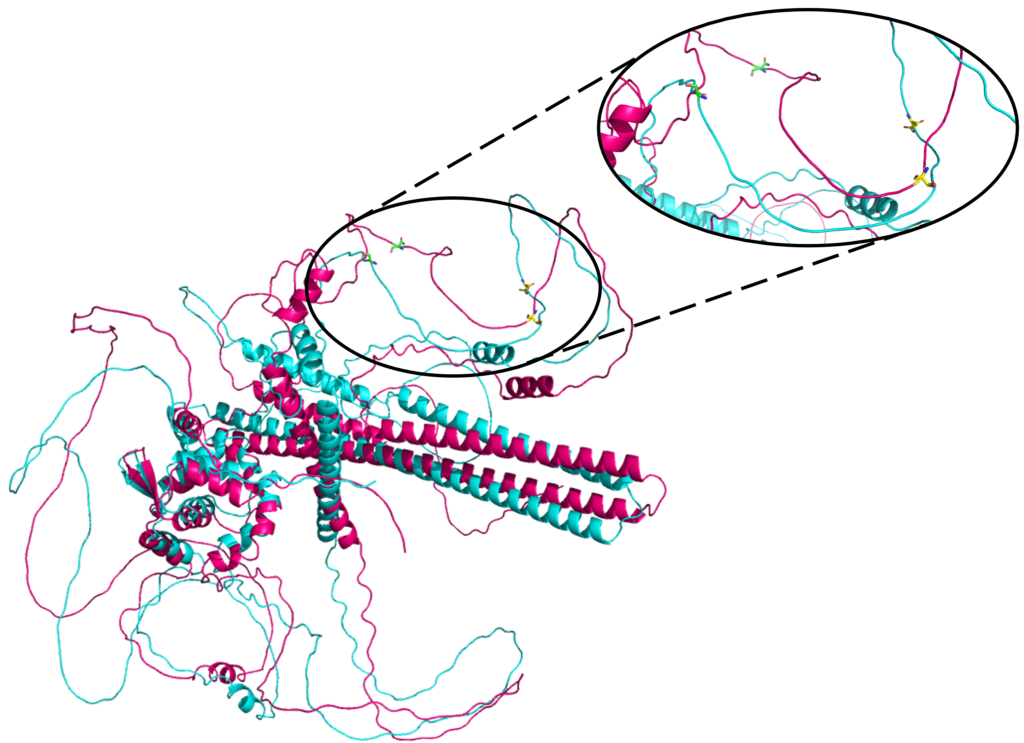On the drive back from this year’s Department of Genetics retreat, my friend and I started talking about evolution and why there is only one extant species of human. The following weekend back at my apartment, a few internet rabbit holes eventually led me to a gene called FOXP2, also known as the “language gene.”
While learning about this gene didn’t answer my question of why modern humans (scientific name Homo sapiens) are the only surviving species of human, it did ignite my curiosity as to how one gene could have such a big impact on our ability to communicate.
FOXP2, a gene located on the 7th chromosome, stands for Forkhead Box P2. The protein made by this gene is a transcription factor, which means it can turn genes on and off. Differences in the expression of these other genes in the brain affect our ability to utilize and process language. Therefore, individuals with abnormalities in their 7th chromosome that affect the FOXP2 gene (via either mutation or entire deletion of the gene) have delayed speech, trouble interpreting speech, and unclear speech due to apraxia, or difficulty producing the sounds required for speech.
A speech disorder is actually what led to the characterization of FOXP2 in the first place. In 2001, researchers published a study on an anonymous British family, referred to as the “KE family,” who had a speech disorder that spanned three generations. After comparing the affected family members’ genes to an unrelated patient with the same disorder, they discovered a mutation in the FOXP2 gene. The identified mutation led to improper development of the brain. They then concluded that the gene was vital to verbal language development. While later genome-wide studies did not find that FOXP2 was associated with mild speech disorders, a change in the level of FOXP2 expression has been implicated in other disorders such as schizophrenia and autism. The KE family’s disorder also affected their intellectual ability, which makes it more severe than other language impairments. This indicates that FOXP2 is linked not only to language development and usage, but also neurological function as a whole.
FOXP2 is found throughout the animal kingdom and is highly conserved in vertebrates. This means that there are hardly any differences within the sequence of the gene between different species. However, there are a few key differences. One such difference is two amino acid changes between humans and chimps (Fig. 1). At position 303 in the FOXP2 protein, humans have an asparagine while chimps have a threonine; additionally, humans have a serine at position 325 but chimps have an asparagine (Fig. 2). It is unknown what role these differences play, but they may contribute to human speech ability.

Remember that FOXP2 is a transcription factor, meaning it controls which genes are active. The set of genes that are controlled by FOXP2 are expressed differently by chimp FOXP2 than by human FOXP2. This implies that not only are there differences between the genetic sequences of chimps and humans that give us our uniquely human abilities, but there are also differences in which genes are expressed during development.

Since the initial KE family study in 2001, researchers have gotten closer to figuring out exactly how FOXP2 contributes to language ability. One study in 2017 found that FOXP2 helps coordinate muscles in the face that affect the ability to produce speech. Differences within the amino acid sequences of primate FOXP2 proteins could account for the differences in vocalizations between primate species. FOXP2 is also implicated in proper songbird vocalizations and might be involved in bat echolocation, further confirming FOXP2’s important role in communication. Additionally, a 2018 study found that the FOXP2 gene helps shape bone structure in the skull, legs, and spine. These bone structures are necessary for both speech and bipedal movement, which are characteristics that set humans apart from other mammals.
Until recently, the scientific community thought that modern humans developed speech because of the two amino acid differences in their FOXP2 gene compared to that of primates. However, after looking at the genomes of a more diverse set of people in 2018, researchers learned that this is not the case. The gene is definitely involved in language, but a recent mutation in the gene is not the sole reason that today’s humans can talk.
There are many differences in the structure and function of human brains compared to other primates. While FOXP2 might not be the only reason humans can talk and primates cannot, it plays a large role. Studying this gene and the genes that it regulates could lead to a better understanding and detection of language disorders and a better overall understanding of what makes us human.
Peer editors: Nila Pazhayam and Kaeli Welsh
This means that there are hardly any differences within the sequence of the gene between different species. However, there are a few key differences
This blog is very good, I like to see the style of writing and the information is very useful
The content was really very interesting. Best of luck for your next blog.